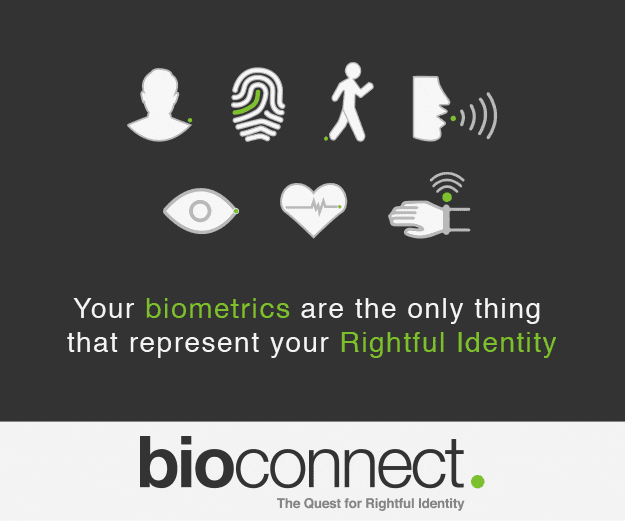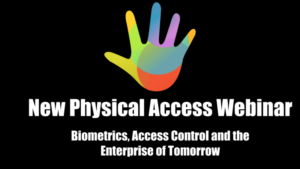Convenience and security is the name of the game when we’re talking about biometrics in the enterprise, and what it adds up to is efficiency. Low friction solutions controlling access and managing attendance equates to fewer hours spent on menial tasks and more time with employees where they need to be, doing what they are paid to do, at the right time.
But biometrics bring more than just efficiency to the workplace. Here’s how:
1. Complex Administration Is Made Easier To Manage and More Accountable
 Lower friction is one thing when it comes to workforce management. Time cards or time sheets that need to be physically organized and entered by employees when they start and finish their shifts can be a time-suck that’s prone to error and fraud. Biometrics offer an easy fix, replacing all the tedium with a simple scan. But on the administrative side is where the real miracle happens in biometric workforce management.
Lower friction is one thing when it comes to workforce management. Time cards or time sheets that need to be physically organized and entered by employees when they start and finish their shifts can be a time-suck that’s prone to error and fraud. Biometrics offer an easy fix, replacing all the tedium with a simple scan. But on the administrative side is where the real miracle happens in biometric workforce management.
Some workplaces never close, and with multiple shifts of different workers moving into and out of a workplace on a twenty-four hour clock, the actual payroll and scheduling can look like a never ending nightmare. Biometrics help automate this process. Punch cards can be replaced with strong authentication based on any number of factors—fingers, faces, eyes, unique vital signs—allowing automated time clocks to start not only counting paid hours, but identifying workers. It cuts out the data entry in the equation and greatly reduces the risk of time fraud.
For an example, look to the Ingenio Azucarero Injiboa sugar mill in San Vicente, El Salvador. During peak production times, the facility’s employees are working around the clock and taking multiple shifts, making employee administration incredibly difficult. During peak times, the business is susceptible to administrative errors and employee time fraud. The sugar mill deployed iris biometrics technology from Iris ID, which allows for contactless workforce management. According to Faucy Brand, the CEO of the company that helped install the biometric system, Iris ID’s biometrics left the mill’s administrators very satisfied.
2. Employees Never Lose Their Keys

Once at a part time job when I was a teenager working at a mall, I dropped the keys to my retail store’s storage facility down the small crack in the threshold of the mall’s elevator. The ensuing conversation with mall security and the store manager was excruciating. That scenario, including the wasted time of all the people who had to crawl into the elevator shaft and retrieve the keys, could have been avoided if the store had even one plug and play biometric access control lock.
Embarrassment isn’t the biggest problem of losing a key, obviously. If you’ve ever worked in an office and lost, forgotten, or broken a key card then you know the annoyance and friction caused by low tech systems on a personal level. The accreditation process for a lost key, depending on the workplace and the risk associated with that facility’s restricted access areas, can take hours, if not days. With a biometric lock, though, it is nearly impossible (barring a gruesome workplace injury) that the key to a door will be lost. Your fingerprints and face are always on you and can’t fall down any precarious cracks in the floor.
The upgrade to biometric access is easy and worth the installation for businesses of all sizes. Scalable access control platforms can be installed using the existing IT infrastructure of a building, but if you only have one or two doors worth locking—like that storage room I lost the key too or a home office—an all-in-one biometric door lock like the ZKAccess ML10 (or the mobile ready ML10-B) can do the trick. Battery operated, easy to install, and able to recognize up to 40 distinct users, these plug and play biometric locks are available to any business owner with access to the Internet. And it’s worth it—replacing your keys with your fingerprints and face can cut down on time consuming mishaps.
3. A Safer Workplace
 Thanks to the emergence of Internet of Things, biometric access and workforce management is actually making the workplace safer. In a recent FindBiometrics video interview, Rob Douglas, Founder and CEO of BioConnect, explained how connected machines can leverage biometric identity in order to assure compliance with safety standards.
Thanks to the emergence of Internet of Things, biometric access and workforce management is actually making the workplace safer. In a recent FindBiometrics video interview, Rob Douglas, Founder and CEO of BioConnect, explained how connected machines can leverage biometric identity in order to assure compliance with safety standards.
“An example might be in the area of compliance – if you’re a retailer and you’re working with bailers which are in essence trash compactors of cardboard boxes, under OSHA rules in the US, you have to be 18 years of age or older to be able to operate these machines. And you have to be able to demonstrate that under the compliance of OSHA.
“When you connect BioConnect into your access control applications and then you harness and take advantage of a Suprema biometric device, we can provide certainty into the identity of that person who is 18 or older before they’re authorized to use a machine like that.”
That concept can obviously be expanded for other permissions in the workplace. On site vehicles, heavy machinery, or anything that requires the user have a certain license or be over a certain age can be protected from illegal usage with enterprise biometrics now that we’re living in an age of unprecedented connectivity.
*
Physical Access & Enterprise Month is made possible by our sponsors: ZKAccess and BioConnect.
—
April 13, 2016 – by Peter B. Counter


Follow Us